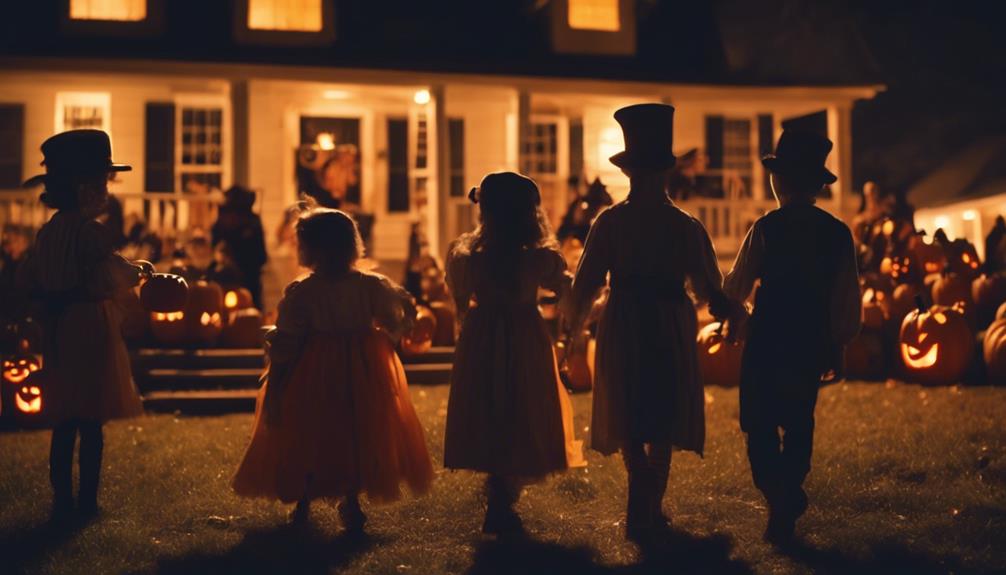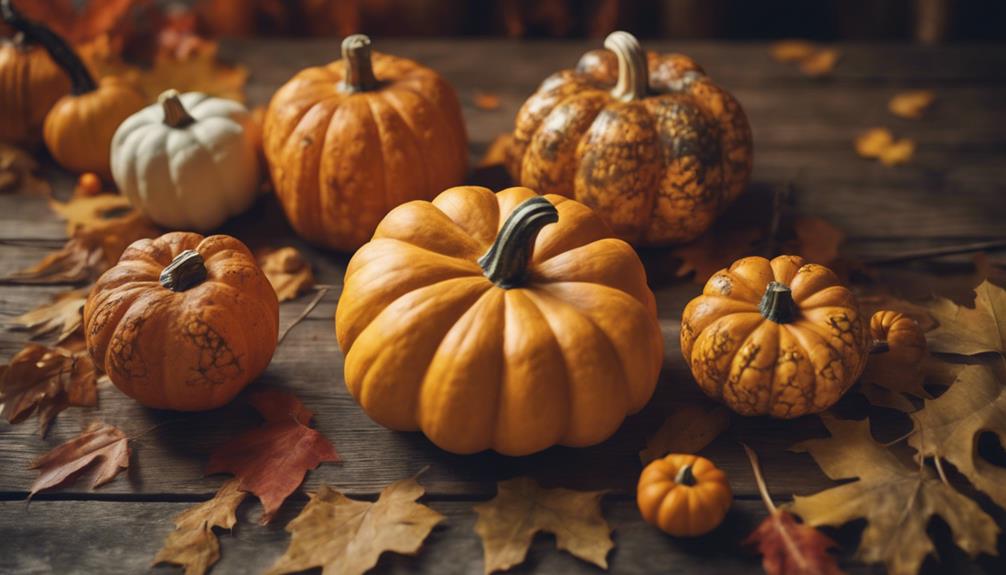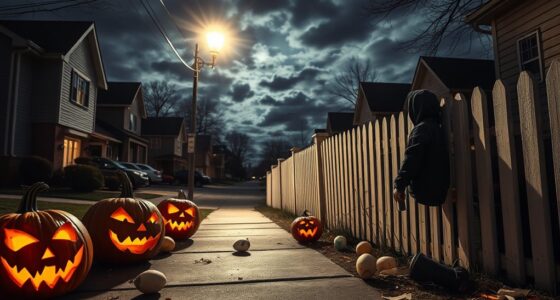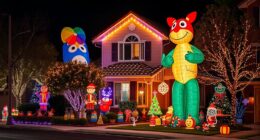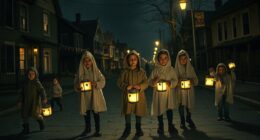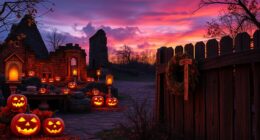Halloween in America has deep roots from the 19th century when Irish immigrants introduced their Celtic traditions. The blend of Irish customs with American celebrations created the holiday as it stands today. Influences from the Druid festival of Samhain and the Christian All Saints' Day shaped its evolution. Modern Halloween, with costumes, parties, and trick-or-treating, became popular in the 20th century. Commercialization further embedded it as a consumer-driven holiday. The rich history behind Halloween in America showcases a fascinating journey of cultural amalgamation and community spirit. Curious to learn more about its intriguing origins and development?
Key Takeaways
- Irish immigrants introduced Halloween traditions to America in the 19th century.
- Halloween in America evolved from Celtic and Christian customs.
- Cultural blending and community celebrations popularized Halloween in the U.S.
- By the 20th century, Halloween became a secular holiday with costumes and trick-or-treating.
- Marketing efforts in the mid-20th century further commercialized Halloween in America.
Origins of Halloween in America
In the mid-1800s, Irish immigrants brought Halloween to America, laying the foundation for its evolution in the New World. Before the Irish arrived, the Celtic festival of Samhain was celebrated by American colonists as a time to mark the end of the harvest season and the beginning of winter. Halloween traditions in the American Colonies started to intertwine with customs from various cultures, shaping what would become All Hallows Eve in the New World.
As Halloween continued to develop in America, it transformed into a time for playful gatherings known as Halloween parties. These early celebrations were pivotal in shaping the modern Halloween festivities that we enjoy today. The blending of different traditions and the addition of new elements during these parties helped solidify Halloween as a beloved holiday in American culture. The origins of Halloween in America reflect a rich tapestry of traditions coming together to create a holiday that continues to captivate people of all ages.
Irish Immigration and Halloween Traditions
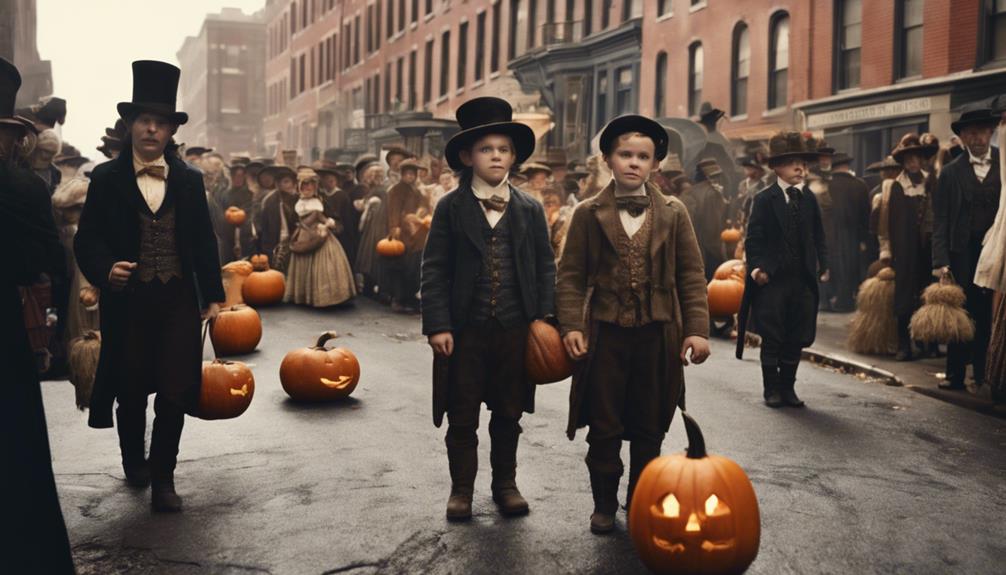
Upon their arrival in the mid-1800s, Irish immigrants greatly influenced Halloween traditions in America, particularly through practices like dressing up and asking for treats. The Irish immigrants brought with them their rich customs rooted in the Gaelic harvest festival of Samhain, which eventually blended with American culture to shape Halloween as it's understood today.
Trick-or-treating, a beloved Halloween activity, finds its origins in the Irish and Scottish traditions of 'souling' and 'guising,' where people would go door to door asking for food or money in exchange for prayers or songs. The merging of these Irish Halloween customs with American practices created a unique and vibrant celebration that captured the imagination of the nation.
Thanks to the Irish immigrants, Halloween became a widely celebrated holiday in the United States, showcasing the power of blending traditions to create something new and exciting for all to enjoy.
Blend of Irish Customs in America
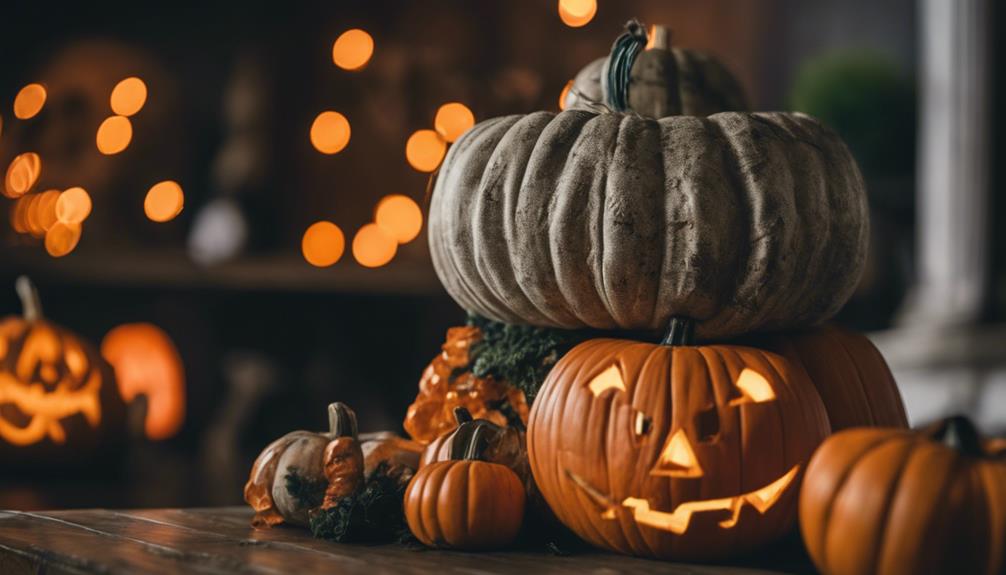
Irish immigrants brought over their Halloween customs, which blended with American traditions to shape the holiday in the U.S.
The influence of Irish culture is evident in modern Halloween celebrations, like dressing up and carving pumpkins.
The unique blend of Irish customs and American culture has contributed to the diverse and vibrant Halloween traditions observed in America today.
Irish Influence on Halloween
Amidst the melting pot of cultural influences shaping Halloween in America, the infusion of Irish customs played a significant role in transforming the holiday into the festive and community-oriented event it's today.
Irish immigrants brought over Halloween traditions like dressing up and asking for treats in the mid-1800s, blending them with existing American customs. The concept of trick-or-treating, a beloved Halloween activity, was influenced by Irish traditions of going door-to-door for food or money.
Additionally, Halloween parties in America started to incorporate Irish customs such as fortune-telling and sharing scary stories from the early colonists. The Irish influence on Halloween in America not only added depth to the celebrations but also contributed to making the holiday more community-oriented, emphasizing the importance of coming together to enjoy the spooky festivities.
Traditions in America
Incorporating elements of Irish customs, Halloween traditions in America have evolved into a unique blend that characterizes the modern celebrations. Irish immigrants brought over traditions like dressing up and celebrating Samhain, which intertwined with Native American customs.
American Halloween parties initially involved play parties where people would wear costumes and share scary stories, creating a festive and spooky atmosphere. The concept of trick-or-treating gained popularity in the 20th century, influenced by Irish and Scottish customs of going door to door for food and treats.
Over time, Halloween assimilated into mainstream American culture, shaping the way modern Halloween is celebrated across the country. This fusion of Irish, Native American, and other cultural elements has made Halloween in America a diverse and vibrant holiday, filled with fun activities, spooky decorations, and of course, lots of treats.
Influence of Druid Festival Samhain

The Druid festival of Samhain played a significant role in shaping the Halloween traditions we see in America today. During Samhain, rituals like lighting bonfires and wearing costumes to ward off spirits were common practices.
The merging of these Druidic customs with Christian influences laid the foundation for the evolution of Halloween as a cultural phenomenon in the United States.
Druidic Origins of Halloween
Influenced by the Druid festival Samhain, Halloween in America traces its origins back to a time when the boundary between the living and the dead was believed to blur. Samhain, a significant Druid celebration, marked the end of the harvest season and was a time when Druids made predictions about the future, adding an air of importance to the festival. This Gaelic tradition of Samhain later blended with Christian holidays like All Saints Day, shaping the evolution of Halloween in the United States.
The Druidic origins of Halloween played a pivotal role in shaping the modern-day festivities, incorporating ancient practices and beliefs into contemporary celebrations. The mystical aspects of Samhain, with its focus on the supernatural and the connection between the living and the deceased, continue to influence the spirit of Halloween in America. By combining elements from different cultural traditions, Halloween has become a unique and vibrant holiday that resonates with people of all ages.
Rituals and Traditions
The mystical elements and cultural significance of the ancient Druid festival Samhain have strongly influenced the rituals and traditions observed during Halloween in America. The Celts believed that during Samhain, the boundary between the living and the dead became blurred, allowing spirits to roam the earth. This belief led to customs such as lighting bonfires and wearing costumes to ward off malevolent spirits. Druids, who were prominent during Samhain, engaged in activities like making predictions about the future, adding a mystical aspect to the festivities.
These traditions from Samhain were brought to America by Irish and Scottish immigrants, blending with existing American customs to shape the unique Halloween celebrations seen today. The blending of Celtic rituals with American practices created a holiday that incorporates elements of both cultures, making Halloween in America a rich tapestry of traditions. From trick-or-treating to pumpkin carving, the influence of Samhain is evident in the customs that have become synonymous with Halloween in the United States.
Cultural Assimilation in America
Cultural assimilation in America, shaped by the influence of the Druid festival Samhain, has intricately woven together diverse traditions to create the modern Halloween celebrations in the United States.
In the 19th century, Irish immigrants brought over their Samhain customs, which gradually merged with American culture, leading to the evolution of Halloween as it's known today. The blending of traditions like bonfires, costumes, and the belief in spirits from Samhain has become deeply ingrained in American Halloween celebrations.
The practices of carving pumpkins, dressing up in costumes, and marking October 31 as a day of celebration all stem from the cultural assimilation of Samhain traditions in America. The significant role played by Irish immigrants in adopting and adapting Samhain customs can't be understated, as it laid the foundation for shaping the vibrant and festive Halloween traditions that are now an integral part of American culture.
Evolution of American Halloween Celebrations
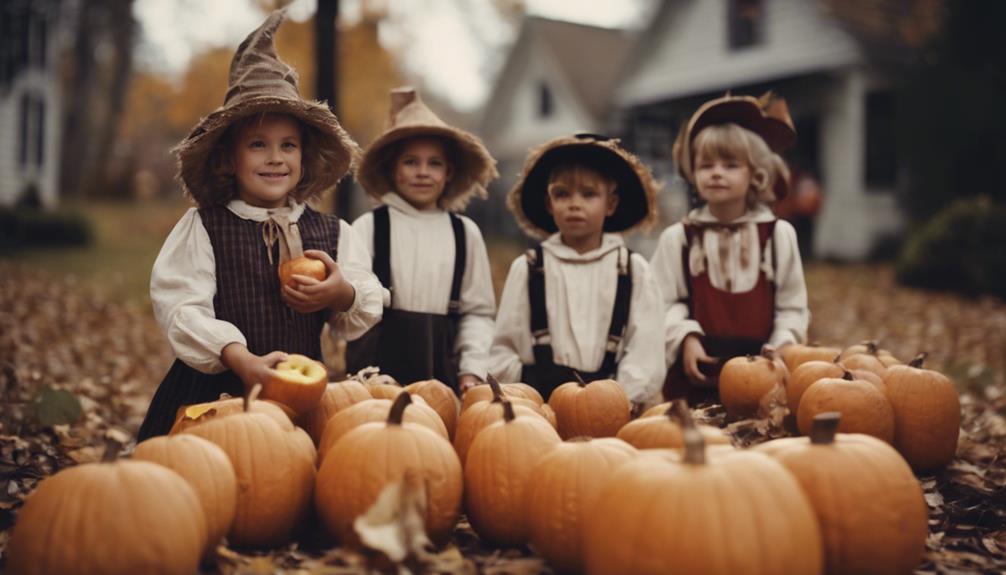
As American Halloween celebrations evolved, they intertwined European and Native American customs to create a unique and vibrant tradition. Irish immigrants escaping the Potato Famine brought their Halloween traditions to the U.S., influencing the development of modern Halloween practices.
The first Halloween parties in America were play parties that laid the foundation for the festive gatherings we see today. Trick-or-treating gained popularity in the 20th century, especially with the introduction of Halloween-themed candies, adding a sweet element to the tradition.
The evolution of Halloween in the American Colonies saw a shift from ancient Samhain celebrations to more community-focused play parties, emphasizing the social aspect of the holiday. This blend of influences from different cultures shaped American Halloween into the diverse and exciting celebration it's today, with a mix of spooky, fun, and community-oriented activities that continue to evolve with each passing year.
All Saints Day Influence in America
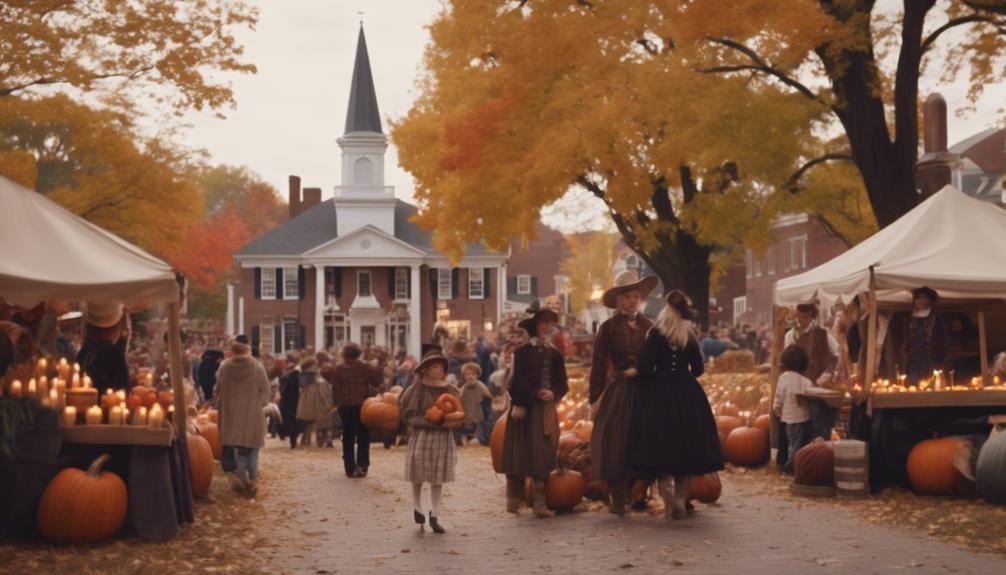
Drawing from ancient traditions, All Saints Day weaves a rich tapestry of influence into the vibrant fabric of American Halloween celebrations.
The merging of customs from All Saints Day greatly impacted the development of Halloween traditions in the United States. American Halloween celebrations were shaped by the influence of All Saints Day, helping establish Halloween as a holiday in the U.S.
The observance of All Saints Day played a pivotal role in the evolution of Halloween practices in America, influencing various aspects of the holiday's customs and traditions.
Through the incorporation of elements from All Saints Day, American Halloween celebrations gained depth and richness, creating a unique blend of ancient traditions and modern festivities.
The All Saints Day influence continues to resonate in the way Halloween is celebrated across the country, showcasing the lasting impact of historical customs on contemporary holiday traditions.
Popular Halloween Activities in the U.S
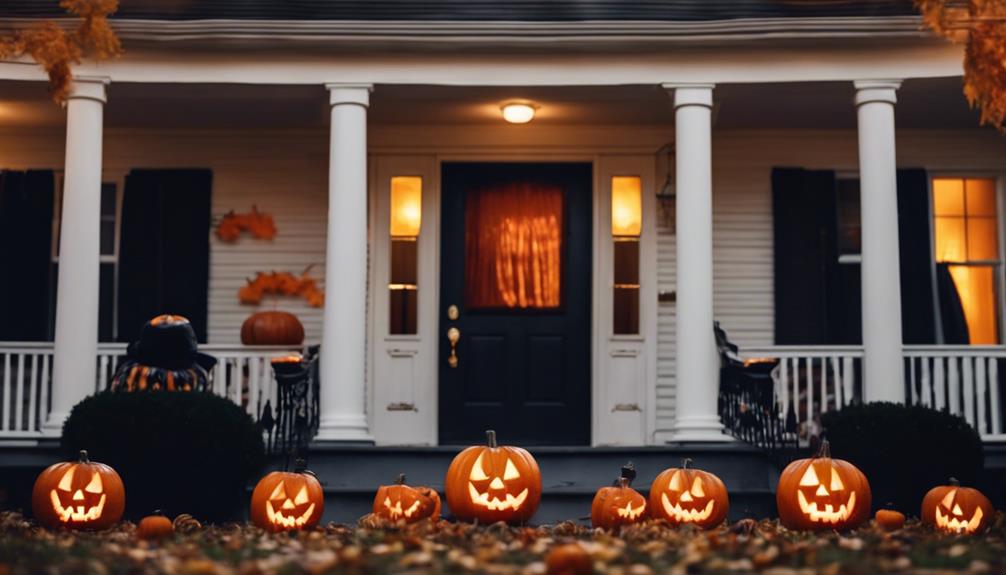
Trick-or-treating is a beloved tradition where children dress up in costumes and go door-to-door for candy.
Americans also enjoy the pumpkin carving craze, transforming pumpkins into spooky jack-o-lanterns.
Additionally, costume parties are a hit during Halloween, with many going all out with elaborate costumes for the festivities.
Trick-or-Treating Tradition
In the U.S., participating in the tradition of going door-to-door for treats while dressed up has become a popular pastime during Halloween festivities.
Here are three key points about the trick-or-treating tradition:
- Community Bonding: Trick-or-treating encourages neighbors to come together, as children and families visit houses in the neighborhood, fostering a sense of community spirit.
- Creative Halloween Costumes: Dressing up in Halloween costumes adds fun and excitement to the tradition, with individuals showcasing their creativity through spooky, funny, or unique outfits.
- Candy Galore: The joy of receiving and sharing Halloween-themed candies like chocolates, lollipops, and gummies enhances the sweet experience of trick-or-treating, making it a highlight for many during Halloween celebrations.
Trick-or-treating, stemming from European customs and gaining popularity in the 20th century, has evolved into a cherished family-oriented celebration in the United States, thanks to the efforts of communities to promote safe and enjoyable Halloween activities.
Pumpkin Carving Craze
During the Halloween season in the United States, one of the most beloved and creative activities is pumpkin carving. This Halloween activity has a rich history dating back to the 19th century when Irish immigrants brought the tradition of carving turnips to America.
Over time, the tradition evolved, and pumpkins became the go-to choice for carving due to their availability and ease of carving. The practice of carving pumpkins with scary faces was believed to ward off evil spirits during Halloween festivities.
Today, pumpkin carving remains a popular Halloween activity, enjoyed by families and communities throughout the United States. It has become a symbol of creativity and celebration during the Halloween season.
Whether you're carving a simple spooky face or an intricate design, the tradition of pumpkin carving continues to bring joy and excitement to all who take part in this Halloween tradition. So, grab your pumpkins, carve out some fun, and embrace the Halloween spirit!
Costume Party Mania
The evolution of Halloween festivities saw the emergence of costume parties as a beloved tradition in the U.S. People across the country embraced the opportunity to dress up in spooky outfits and creative costumes, adding a fun and festive element to Halloween celebrations. Here are three key aspects of the costume party mania:
- Spooky Outfits: Halloween costume parties often featured elaborate and eerie costumes, allowing party-goers to embody their favorite spooky characters and creatures.
- Costume Contests: Costume contests at these Halloween parties became a popular activity, where individuals could showcase their creativity and originality while competing for prizes.
- Festive Atmosphere: Halloween costume parties provided a social and vibrant atmosphere for friends and family to come together, enjoy the holiday spirit, and admire each other's imaginative costumes. The mix of spooky themes and creative outfits created a lively and engaging environment for all participants.
Carving Pumpkins and American Halloween
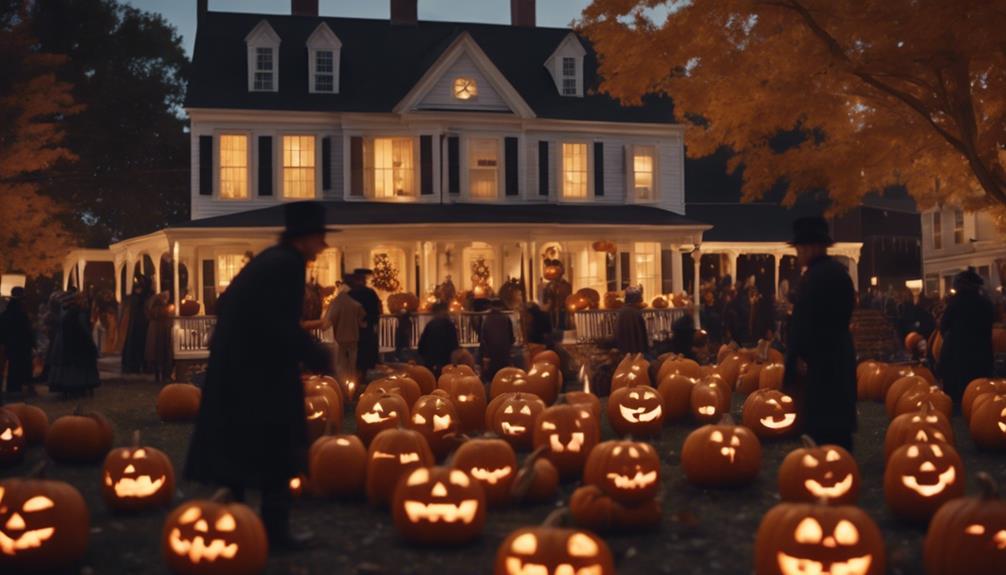
Carving pumpkins for Halloween in America evolved from the Irish tradition of carving turnips to ward off evil spirits. The practice gained popularity in the U.S. due to the abundance of pumpkins and their ease of carving compared to turnips. Pumpkins were transformed into jack-o'-lanterns with spooky faces to symbolize spirits or guide departed souls. The term 'jack-o'-lantern' originates from the legend of Stingy Jack, a man who outwitted the devil and was cursed to wander with a carved turnip lantern. Today, carving pumpkins is a significant American Halloween tradition, with elaborate designs and competitions held throughout the season.
| Carving Pumpkins and American Halloween |
|---|
| – Originated from Irish turnip carving tradition |
| – Popular in the U.S. due to abundant pumpkins |
| – Jack-o'-lanterns represent spirits or guide souls |
| – Tradition linked to the legend of Stingy Jack |
Trick-or-Treating History in America
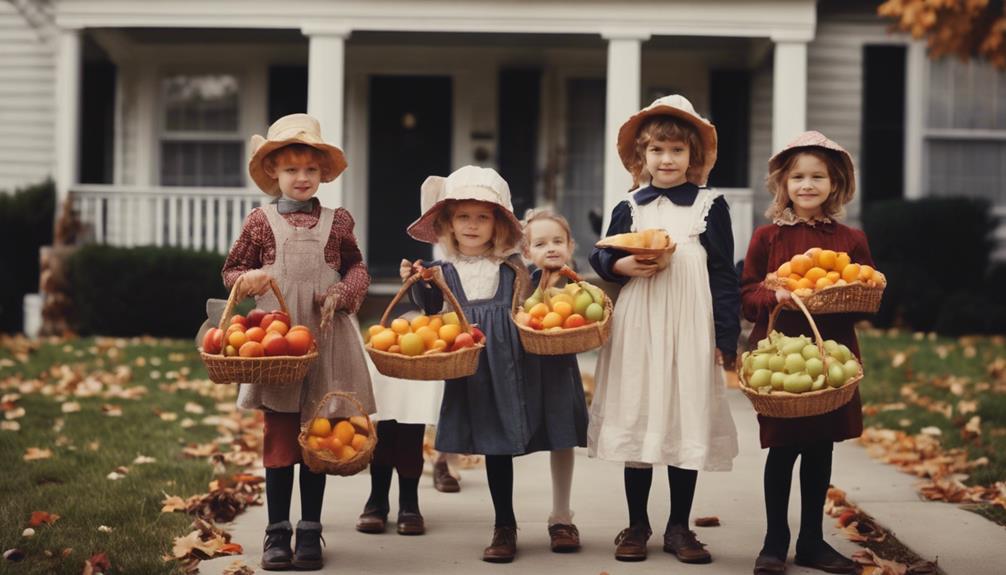
Trick-or-treating history in America traces back to the mid-1800s when Irish immigrants introduced the tradition. Over time, this practice evolved into a beloved Halloween tradition across the United States.
- Irish Influence: Irish immigrants brought the custom of going door to door asking for food and money during Halloween festivities to America, laying the foundation for what would become modern trick-or-treating.
- Adoption of the Tradition: Americans embraced the idea of dressing up in costumes and going house to house for treats during Halloween, turning it into a popular tradition for both children and adults.
- 20th Century Popularization: While the concept of trick-or-treating was slow to catch on in America, the introduction of Halloween-themed candies by companies in the early 20th century played a significant role in popularizing the tradition and making it a widespread practice throughout the country.
Commercialization of Halloween in the U.S
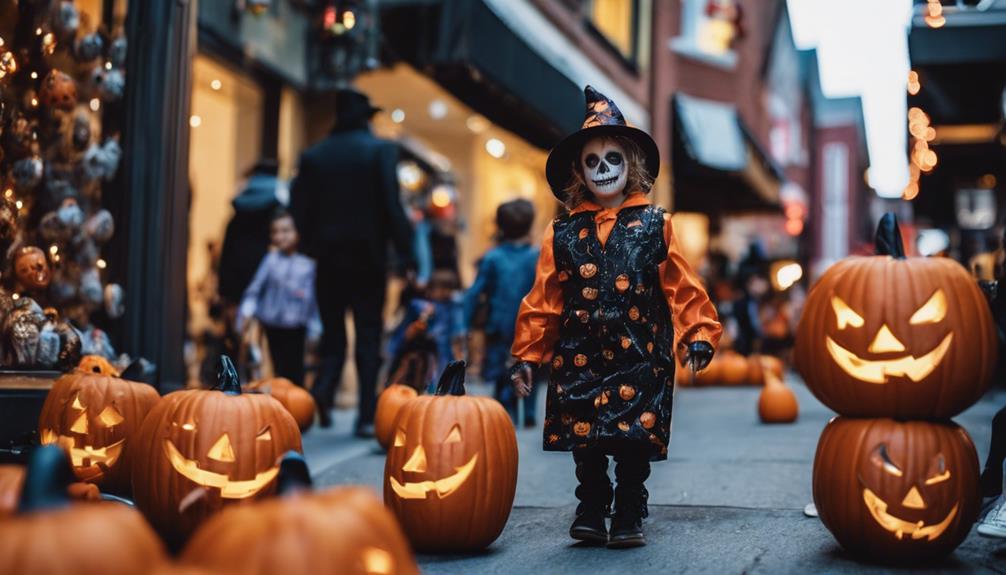
Amidst the vibrant celebrations and spooky decorations, Halloween in the U.S. has increasingly become a commercial extravaganza.
The commercialization of Halloween in the U.S. began in the 20th century, with the sale of costumes, decorations, and candy. As the latter half of the century unfolded, the commercialization of Halloween products gained momentum.
Today, Halloween merchandise sales in the U.S. soar into the billions annually, presenting a substantial economic opportunity for businesses. Companies leverage the Halloween season by offering a plethora of themed products and experiences to consumers, from elaborate costumes to intricately designed decorations.
This commercial aspect of Halloween has fostered a diverse range of products, events, and marketing campaigns across the U.S. The commercialization trend continues to shape Halloween into a widely celebrated holiday that not only thrills with its spooky traditions but also entices with its array of commercial offerings.
Frequently Asked Questions
How Did Halloween Come to America?
Halloween came to America through Irish immigrants in the mid-1800s. American colonists had similar traditions before their arrival. These traditions merged and evolved in the colonies, eventually leading to the transformation of All Hallows Eve into a time for play parties.
The first Halloween parties in America played a significant role in shaping modern Halloween celebrations.
What Is the True Story Behind Halloween?
The true story behind Halloween is a fascinating blend of Celtic, Roman, and Christian traditions that have shaped the holiday we celebrate today.
It's a rich tapestry of ancient rituals and beliefs that have evolved over centuries to become the festive occasion we're familiar with and cherish.
Exploring the origins of Halloween reveals a colorful history filled with superstitions, celebrations, and cultural exchanges that continue to influence our modern-day festivities.
Why Was October 31ST Chosen for Halloween?
October 31st was chosen for Halloween because it aligns with the Celtic festival of Samhain and the eve of All Saints Day. This date marks the end of the harvest season and the onset of winter in many cultures.
The ancient Celts believed that on Samhain, the boundary between the living and the dead was blurred. This association with supernatural events and seasonal shifts made October 31st a fitting choice for Halloween.
Why Do We Trick or Treat on Halloween?
On Halloween, trick-or-treating is a fun tradition where kids dress up and go door-to-door for treats. It's a way to celebrate the holiday and enjoy some sweet snacks.
People participate to have a good time, show off their costumes, and collect candies. Remember to stay safe and be respectful while trick-or-treating.
It's all about spreading joy and having a spooky good time on Halloween night!
Conclusion
To sum up, Halloween in America began with Irish immigrants bringing their traditions to the New World. The blend of Irish customs and the influence of the Druid festival Samhain shaped the evolution of American Halloween celebrations.
Today, popular activities like carving pumpkins and trick-or-treating continue to be enjoyed by people of all ages. Despite its commercialization, Halloween in the U.S. remains a beloved holiday filled with spooky fun and festive spirit.
